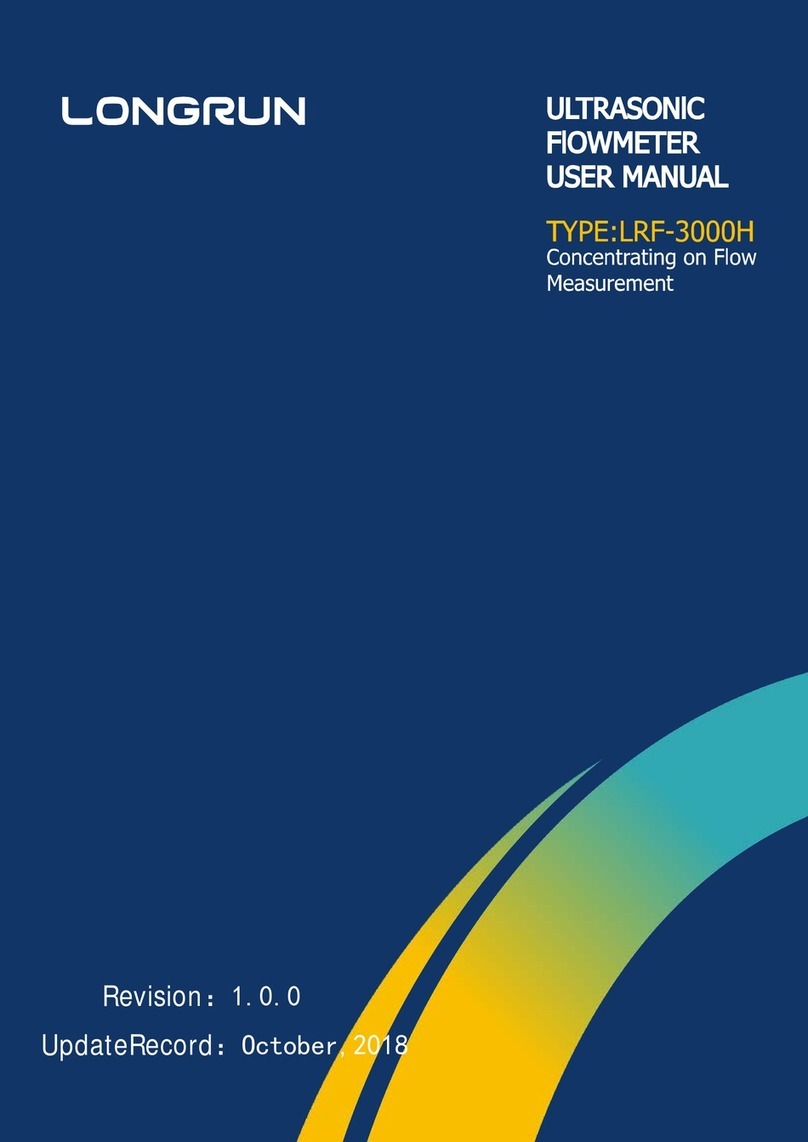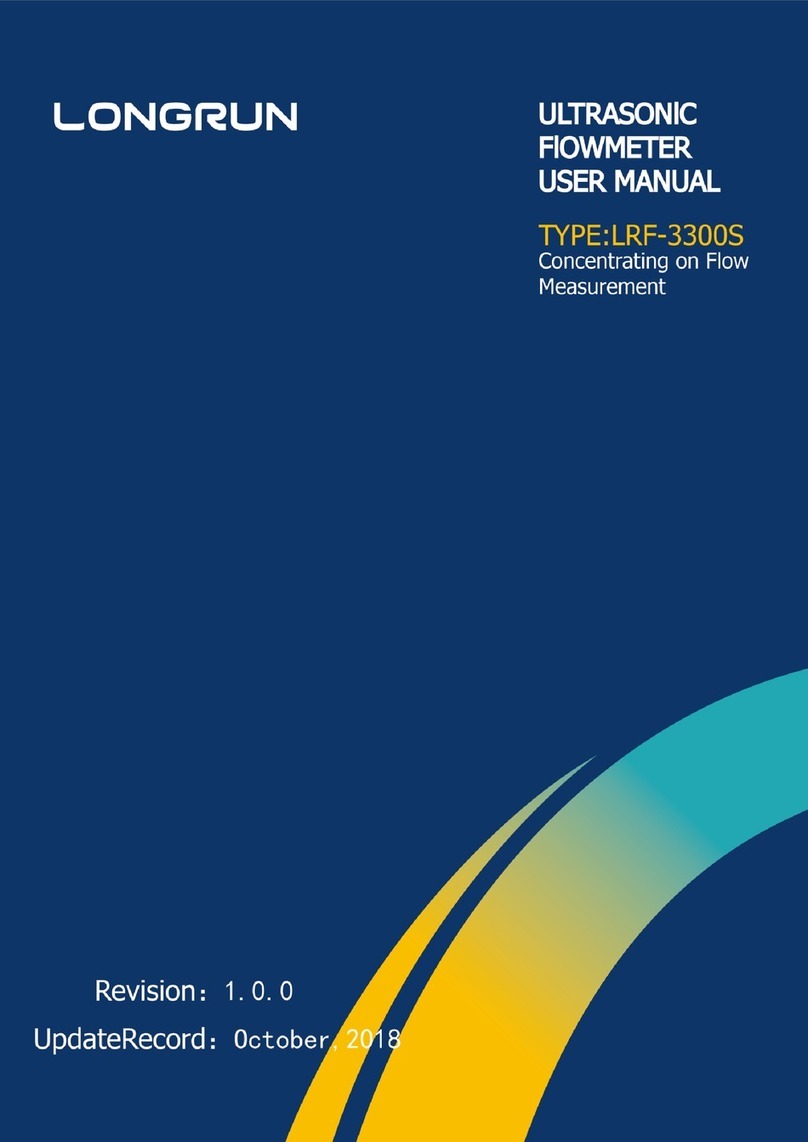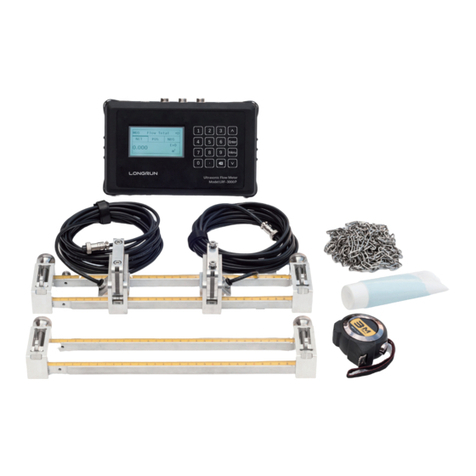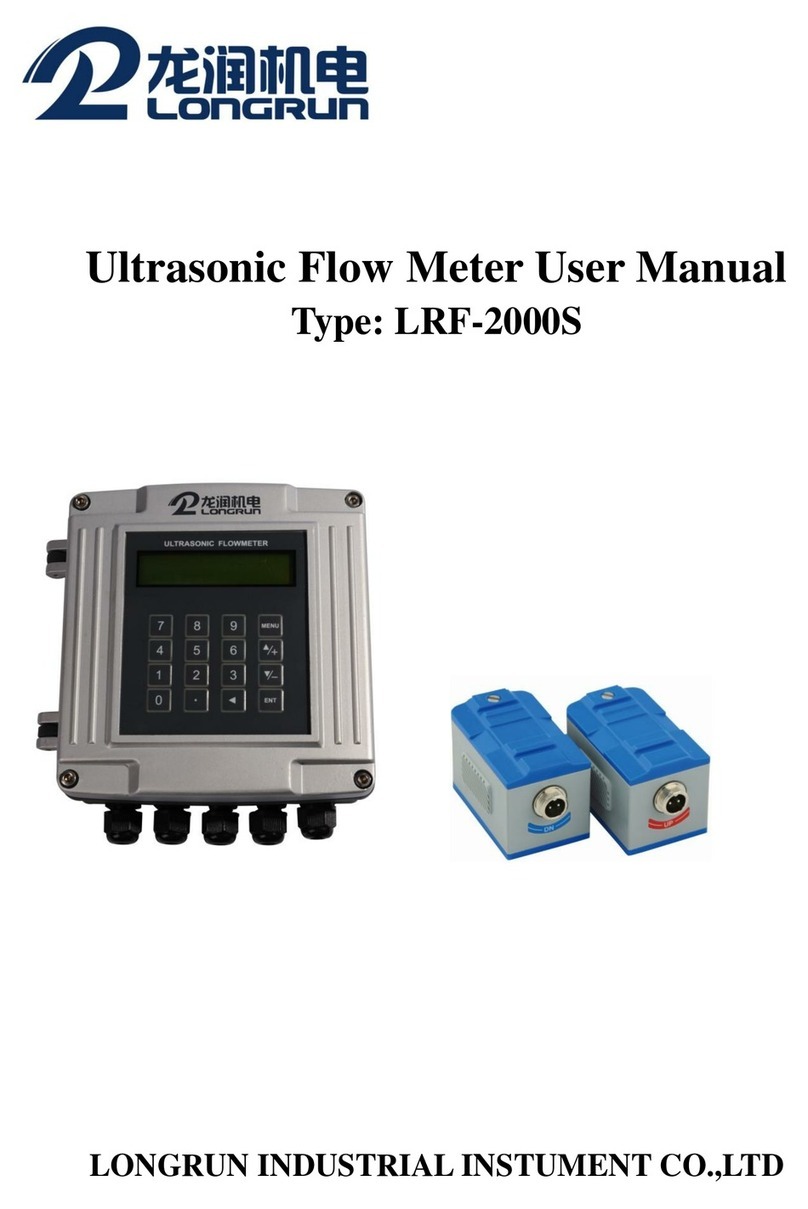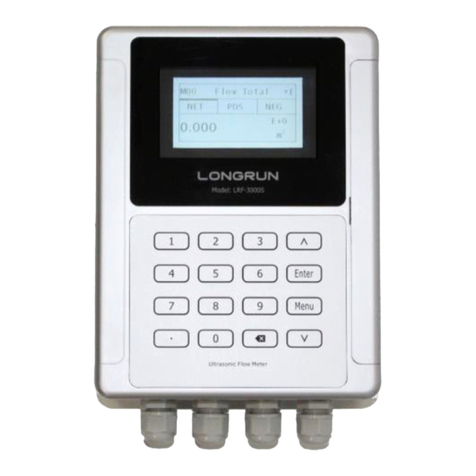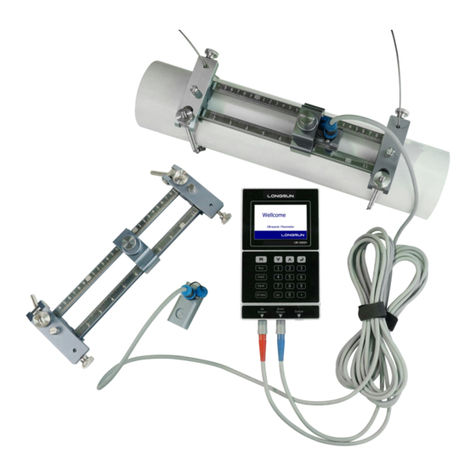
www.ultrasonicscn.com
4
Technical Manual for LRF-2000M
This manual applies to LRF-2000M version13.44 and above.
1. Must-knows about LRF-2000M
Please read the following paragraphs when you use LRF-2000M for the first time
1. The setup of a LRF-2000M ultrasonic flow converter needs one of the three tools. The
first tool is a parallel LCD and keypad module which can be connected to the 20 Pins port.
The second tool is a serial LCD and keypad module which can be connected to the RS485
port. The third one is a PC-based software (under development), by means of the software,
the parameters that LRF-2000M needs to work properly could be downloaded by use of the
RS232 port on the PC. If your computer does not have a RS485 port, you need to buy a
RS485-RS232 converter.
2. All setup parameter data are stored in the RAM memory temporally. Users need to
solidify the parameters, when setups are been finished, that is to store the parameter to
the internal flash memory. Go to Menu26, Select the option that says “make default paras”
then pressing the ENT key will start the progress of storing. If the current parameters are
different with that in the flash memory, the system will store your current parameters into
the flash memory and then boot again. By doing so, the parameters will always be get lost,
even when both the power supply and the backup battery are removed.
3. The zero point, that is the indicated flow under the situation of motionless liquid, has a
great influence over the linearity and accuracy of the flow meter. Users should try every
possibility to perform the Zero Setup that is located at Menu 42. Zero setup should always
been performed under the condition of motionless liquids. If Zero setup was been
performed with motion of the liquid, you can use Menu 43 to restore to the original zero
point. The zero point will be stored in the RAM memory temporally when you use Menu 42.
If you want to solidify the zero point, you need to perform Menu 26 “make default paras”
function again. If this step was omitted, the system will override the RAM zero point by
restoring the zero point that is stored in the flash memory with next power-on.
4. The internal calendar is the base of date accumulators. Incorrect date and time will
cause messy records with the date accumulators. Please the user check the calendar by
input correct date and time. The calendar runs relying on the backup battery when there is
no 24VDC supply. When the battery voltage is less than 2 volts, a new backup battery
should be replaced with. Replacing the battery with a new one should be performed with
the 24VDC applied so that the accumulator data and calendar data will not get lost.
5. Please pay great attention to the power supply. The applied voltage should be in the
range of 8V to 36VDC, or 10V to 30VAC. Avoid applying an 110VAC or 220VAC power
forever, or the module will be damaged.
6. Pay attention to the display located on Menu 48, which shows the points of lines for the
linearity correction function. 0 stands for shutting off the function. The default value is 0.
Try to make sure that value is 0 so as to avoid abnormal flow.












